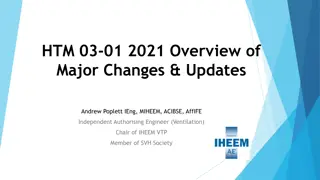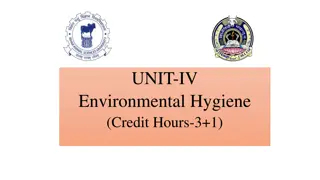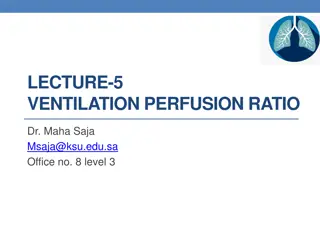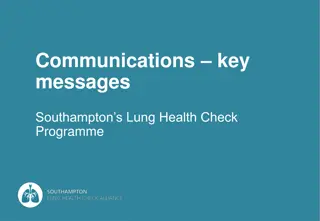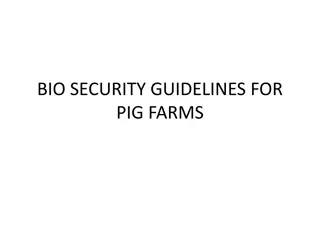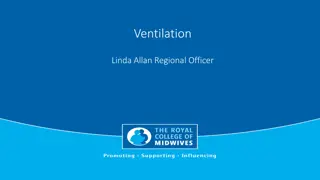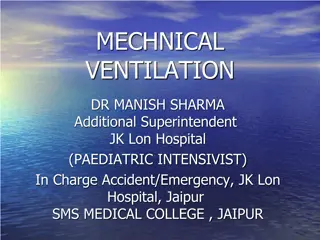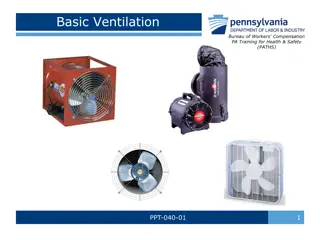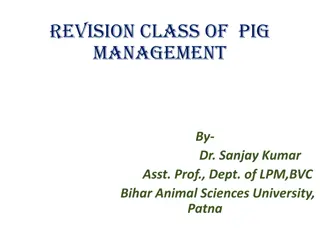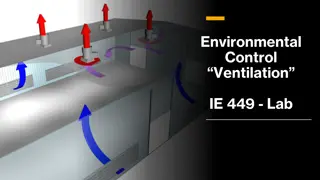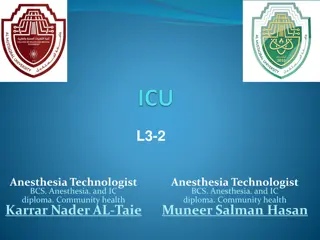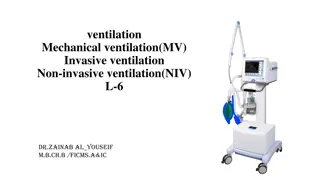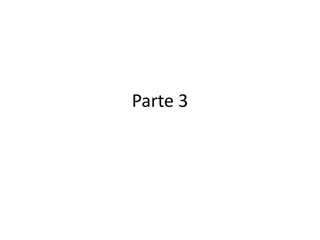Understanding Mechanical Ventilation in a Pig Lung Perspective
Explore recruitment strategies, minute ventilation concepts, and optimization techniques in mechanical ventilation from a unique pig lung perspective. Learn about benefits, recommended PEEP levels, driving pressure, goals of ventilation, and the concept of permissive hypercapnia in respiratory care.
Download Presentation

Please find below an Image/Link to download the presentation.
The content on the website is provided AS IS for your information and personal use only. It may not be sold, licensed, or shared on other websites without obtaining consent from the author. Download presentation by click this link. If you encounter any issues during the download, it is possible that the publisher has removed the file from their server.
E N D
Presentation Transcript
Mechanical Ventilation: Recruitment & Minute Ventilation A Pig Lung Perspective
Objectives Discuss recruitment strategies and benefits of mechanical ventilation Discuss the concept of minute ventilation and its components Minute ventilation optimization Provide visual example of recruitment using pig lung
Benefits Improved oxygenation Improvement in pH through CO2removal Decreased shunting (if done correctly) You may not die
PEEP and Driving Pressure Recommended PEEP level is 8-15 cmH2O in mild ARDS and 10-20 cmH20 in moderate or severe If PEEP is 10-20 and pPlat is limited to 30 this allows for only 10-20 cmH2O of driving pressure This may result in VTof only 4-6 ml/kg IBW Adjustments to minute ventilation (VE) then are made with respiratory rate, provided gas trapping does not occur
Question First do no harm: Which is better? High VE Permissive hypercapnia
Answer Of course it depends
Its good to have goals Goals of mechanical ventilation Improve gas exchange Restore pH to normal levels What happens if normalizing causes harm?
Permissive Hypercapnia Most patients, if renal and cardiovascular function are normal, will tolerate a gradual increase in Paco2. Goal for permissive hypercapnia is a pH 7.20-7.30 in most cases Acute rises in Paco2should be avoided
How do we get there? Start with a plan Determine IBW Men= 50+2.3(h-60) Women= 45.5+2.3(h-60)
How do we get there? Multiply IBW X 120ml= initial VE This will compensate for deadspace added If severe metabolic acidosis is present (ie ASA overdose, DKA) we may end up as high as 240ml per kg IBW Once VEis determined, select targeted VTbased on the suggested 4-8 ml/kg IBW.
How do we get there? Once VTis selected, divide VE/VT. This will give us our initial set rate. Example: 6ft tall male IBW=77.6kg (lets round to 78kg) 120ml X 78= 9,360 ml. This is our initial VE VT=7ml per kg IBW (7X78=546) 9,360ml/546=17 These would be our initial settings
Are we there yet? Almost. Make adjustments using this equation: (Actual CO X RR, VT, or VE)/ Desired CO2 Example: (70 X 17) / 55= 22. This is our new rate.
Putting it all together Elderly female patient presents with difficulty breathing and SOB VBG drawn shows: 7.29/72/36/+9/35. NPPV initiated, but poorly tolerated ABG 30 minutes later: 7.16/85/95/+2/31 Patient intubated. Let s do math! She is 5 feet tall. 45.5 + 2.3 (60-60)=47.8 or 50kg IBW 120 X 50=6,000ml VE 7 ml/kg IBW= 350ml VT 6,000/350= 17. ABG post intubation: 7.32/51/41/0/27
References Hess, D; Kacmarek, R. Essentials of Mechanical Ventilation. New York, NY. McGraw Hill. Weingart, S. ( 2016, November) Managing Initial Ventilation in the Emergency Department. Annals of Emergency Medicine, Volume 68. ARDSnet (2008). http://www.ardsnet.org/files/ventilator_protocol_2008-07.pdf




